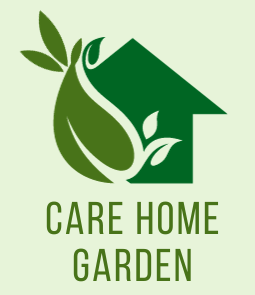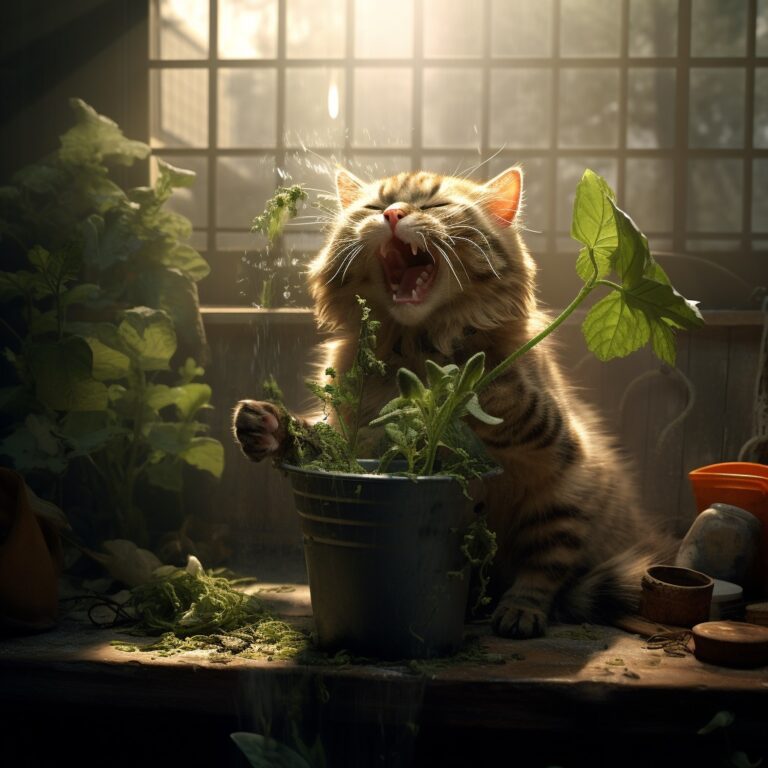
Table of Contents
Introduction: Keeping Your Furry Friend Safe from Toxic Plants
Hey there, fellow cat lovers! We all know our feline companions can be curious creatures. They love sniffing around, exploring their environment, and sometimes, even taking a nibble on things they shouldn’t. While this adventurous spirit is part of what makes our cats so lovable, it can also pose some risks, especially when it comes to houseplants.
Many popular houseplants are actually toxic to cats, and even a small nibble can make them quite sick. This can be a huge worry for us cat owners, who want nothing more than to keep our furry friends healthy and safe. That’s why I’m here to guide you through the world of toxic plants and help you create a safe and happy home for both you and your cat.
In this article, we’ll delve into the dangers of toxic plants, explore the common signs and symptoms of poisoning, and unveil the identities of some notorious plant culprits. We’ll also bust some myths and provide valuable resources to help you make informed decisions about your indoor greenery.
So, grab a cup of coffee, settle in with your furry friend by your side, and let’s embark on this journey towards a safe and plant-filled haven for both of you!
The Dangers of Toxic Plants for Cats: A Furry Friend's Worst Nightmare
Imagine this: You’re browsing the plant store, captivated by the beauty of a vibrant snake plant. You bring it home, excited to add a touch of greenery to your living room. But little do you know, this seemingly harmless plant harbors a secret danger for your beloved feline companion.
That’s the scary reality of toxic plants for cats. These seemingly innocent houseplants and outdoor wonders can hold hidden toxins that can make your furry friend seriously ill. Even a small lick or chew can trigger a cascade of unpleasant symptoms, ranging from vomiting and diarrhea to tremors and seizures.
The worst part? The consequences can be severe and, in some cases, even life-threatening. That’s why it’s crucial for us cat owners to be aware of the dangers lurking within our homes and gardens.
Here’s the thing: different plants possess varying levels of toxicity. Some, like the lilies, pack a powerful punch, and even a single bite can be deadly. Others, like the snake plant, have milder toxins that can cause digestive upset. But regardless of the severity, any exposure to a toxic plant can put your cat’s health at risk.
So, let’s not underestimate the power of these hidden threats. By understanding the dangers and being proactive, we can create a safe haven for our furry friends while still enjoying the beauty of plants in our homes and gardens.
Signs and Symptoms: Spotting the Clues to Toxic Plant Trouble
Your playful kitty suddenly becomes lethargic and loses her usual appetite. She might be hiding more than usual, her tummy rumbling with discomfort, and maybe even drooling more than usual. These could be signs that she’s encountered a toxic plant, and it’s time to act fast.
But how do you know for sure? Don’t worry; I’m here to help you decipher the clues your furry friend might be sending. Here are some of the most common signs and symptoms of toxic plant poisoning:
- Digestive Distress: Vomiting, diarrhea, and lack of appetite are all tell-tale signs that something’s bothering your cat’s tummy. It could be a simple hairball, but it’s crucial to rule out plant poisoning.
- Mouth Misery: Watch for excessive drooling, pawing at the mouth, and even swelling and redness around the lips and tongue. These can signal irritation caused by plant toxins.
- Lethargy and Hiding: Sometimes, a poisoned cat might become less playful and hide more than usual. This could be due to discomfort, pain, or simply feeling unwell.
- Uncoordinated Movements: Tremors, wobbly gait, and even seizures can be scary symptoms of more severe plant poisoning.
- Changes in Urination and Thirst: Pay attention to how much your cat is drinking and urinating. Increased thirst or infrequent urination could be signs of kidney damage caused by some plant toxins.
Remember, these symptoms can vary depending on the specific plant ingested and the amount consumed. But the key takeaway is to be aware of any sudden changes in your cat’s behavior or health. If you suspect plant poisoning, don’t waste time. Immediately contact your veterinarian or a 24/7 animal poison control center for expert advice and treatment options.
By knowing the signs and acting fast, you can help your furry friend overcome this potentially dangerous situation and get back to her playful, healthy self.
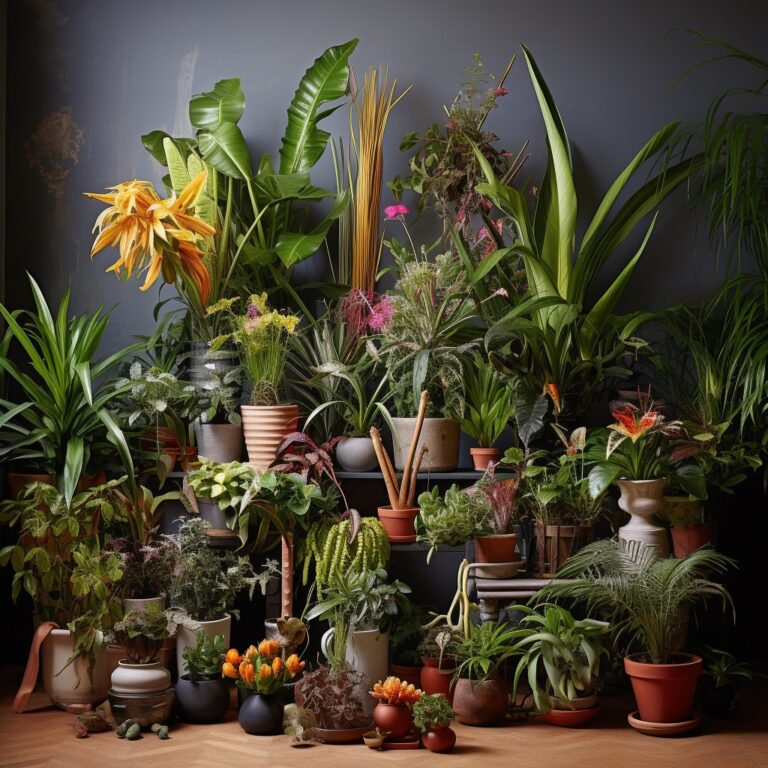
Toxic Plant Rogues' Gallery: Unveiling the Culprits Lurking in Your Home
Now, let’s shed some light on the infamous plant culprits who pose a threat to our furry companions. From popular houseplants to outdoor beauties, we’ll unveil their secrets and explore the potential effects they can have on your beloved feline friend.
Indoor Plant Posse:
- The Lily Gang: These deceptively beautiful blooms, including lilies, easter lilies, and stargazer lilies, pack a deadly punch. Even a tiny nibble can lead to kidney failure in cats, making them one of the most dangerous plants around.
- The Aloe Agony: While aloe vera boasts numerous benefits for humans, it’s not a friend to our feline friends. Ingestion can trigger vomiting, diarrhea, and stomach discomfort, making your kitty feel rather miserable.
- The Dieffenbachia Dilemma: This common houseplant, also known as the dumb cane, lives up to its name. It contains insoluble calcium oxalates, causing intense oral irritation, drooling, and difficulty swallowing if your cat bites or chews on it.
- The Dracaena Deception: This leafy beauty, also known as the corn plant, contains saponins, which can cause vomiting, lethargy, and lack of appetite. Don’t let its innocent appearance fool you!
Check out our other articles on what we can and can’t include in our cat’s diets:
Outdoor Plant Prowlers:
- The Sago Palm Surprise: This palm-like plant is actually a cycad and highly toxic to cats. Ingestion can lead to vomiting, bloody stool, jaundice, and even death.
- The Cyclamen Conundrum: These vibrant flowering plants, especially their underground tubers, are packed with toxins that can cause drooling, vomiting, and even seizures in cats.
- The Marijuana Mishap: With increasing legalization, marijuana poses a potential threat to curious cats. Ingestion can lead to uncoordinated gait, dilated pupils, and even seizures, so be extra vigilant if you have this plant in your home or garden.
- The Sweetheart Ivy Seduction: This cascading vine with heart-shaped leaves might look charming, but its sweet appearance can be deceiving. The leaves and berries contain toxins that can cause excessive drooling, vomiting, and abdominal discomfort.
Remember, this is just a glimpse into the world of toxic plants. It’s crucial to do your research and ensure any plant you bring into your home or garden is safe for your feline companion.
So, let’s be proactive plant parents and create a safe haven for our furry friends. By knowing the toxic plant rogues and their potential effects, we can prevent accidents and ensure our cats thrive in a healthy, plant-filled environment.
Myth Buster: Are Poinsettias Toxic for Pets? Demystifying the Holiday Hype
Ah, the poinsettia. It’s a festive symbol of the holiday season, gracing homes with its vibrant red and white foliage. But many pet owners worry about its rumored toxicity, fearing it could harm their furry companions. So, is the poinsettia a silent threat lurking in our holiday decor, or is it a misunderstood holiday hero?
Let’s bust the myth once and for all! Contrary to popular belief, poinsettias are not highly toxic to pets. While they do contain a milky sap that can cause mild irritation to the mouth and stomach if ingested, the severity is usually minimal.
Here’s the good news:
- Poinsettia sap rarely causes serious health issues in cats or dogs.
- Even if your pet takes a nibble, they’ll likely experience minor symptoms like drooling, vomiting, or mild diarrhea.
- These symptoms typically resolve on their own and require no specific medical intervention.
However, it’s still important to be cautious, especially with curious cats who love exploring!
Here are some tips for keeping your pets safe during the holiday season:
- Place poinsettias out of reach of your pets, preferably on high shelves or hanging baskets.
- Supervise your pets when they are around poinsettias.
- If you suspect your pet has ingested part of the plant, immediately contact your veterinarian or a 24/7 animal poison control center.
So, relax and enjoy the festive beauty of poinsettias this holiday season. Just remember to be mindful of your furry companions and take necessary precautions to ensure a happy and healthy holiday for all!
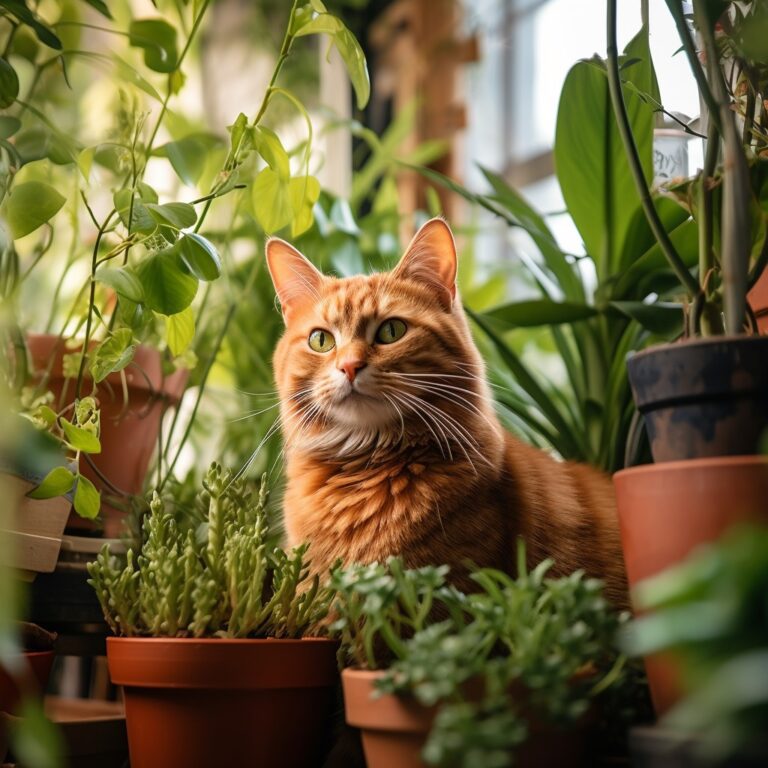
Additional Resources and Helpful Tips: Equipping Yourself for Furry Plant Parenthood
Now that you’re well-equipped with knowledge about toxic plants and their effects on cats, let’s take things a step further with some valuable resources and helpful tips:
Reliable Resources:
- ASPCA Animal Poison Control Center: This 24/7 hotline can provide immediate advice and treatment options in case of suspected pet poisoning. Call them at (888) 426-4435.
- Pet Poison Helpline: Another excellent resource offering 24/7 emergency assistance for pet poisonings. Reach them at (855) 764-7661.
- ASPCA Toxic and Non-Toxic Plants List: This comprehensive list provides information on the toxicity of various plants for cats and dogs. Visit their website for the complete list.
Helpful Tips for Plant-Loving Cat Owners:
- Do your research: Before bringing any new plant into your home, research its potential toxicity for cats. Opt for pet-friendly options to create a safe environment.
- Hang it high: Consider hanging plants in macrame baskets or on high shelves to keep them out of your cat’s reach.
- Plant a cat-safe garden: Create a designated outdoor space with non-toxic plants that your cat can safely explore and enjoy.
- Provide alternatives: Offer your cat enriching alternatives to chewing on plants, such as cat grass, scratching posts, and interactive toys.
- Stay vigilant: Supervise your cat’s interactions with plants and observe any changes in their behavior or health.
- Act promptly: If you suspect your cat has ingested a toxic plant, don’t hesitate to contact your veterinarian or a poison control center for immediate assistance.
By following these tips and utilizing the available resources, you can ensure your feline friend thrives in a green and vibrant environment while keeping them safe from harm. Remember, knowledge is power, and by being proactive and informed, you can create a harmonious haven for both you and your furry companion to enjoy the beauty and benefits of plants.
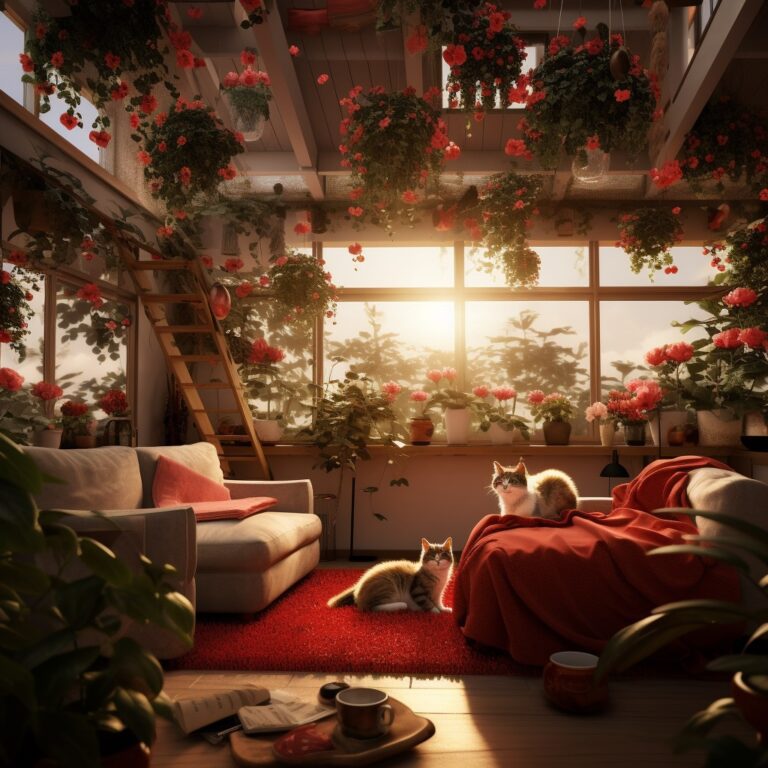
Conclusion: Cultivating a Happy and Healthy Home for You and Your Furry Friend
So, there you have it! Now, you’re armed with the knowledge and resources to navigate the world of plants and keep your feline friend safe and sound. Remember, being a responsible pet parent is about creating a loving and nurturing environment where both you and your furry companion can thrive.
By understanding the dangers of toxic plants, recognizing the signs of poisoning, and taking necessary precautions, you can create a haven where your cat can explore and play while enjoying the beauty and calming nature of plants.
But don’t let the fear of toxic plants discourage you from bringing greenery into your home. With a little research and some simple adjustments, you can create a harmonious balance between your love for plants and your devotion to your feline friend.
So, go ahead, explore the world of plants, fill your home with vibrant greenery, and watch your cat blossom alongside you in a safe and healthy environment. After all, a happy home is one that’s filled with both love and the beauty of nature, and your furry friend deserves nothing less!

Cat-Friendly Gardening: Creating a Safe Haven for Your Feline Friends
Table of Contents Introduction Hey there, fellow feline enthusiasts! 🐾 Welcome to a space where your garden becomes not just a patch of green but
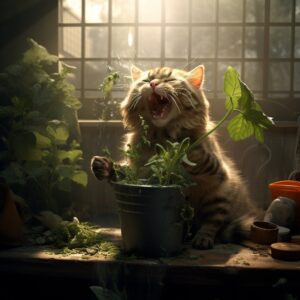
From Lilies to Sago Palms: Protect Your Cat from These 10 Toxic Plants
Table of Contents Introduction: Keeping Your Furry Friend Safe from Toxic Plants Hey there, fellow cat lovers! We all know our feline companions can be

Cat Nutrition 101: Decoding Labels & Essential Nutrients A-Z!
Table of Contents Introduction As a cat owner, you want nothing but the best for your furry feline friend. And that includes providing them with
